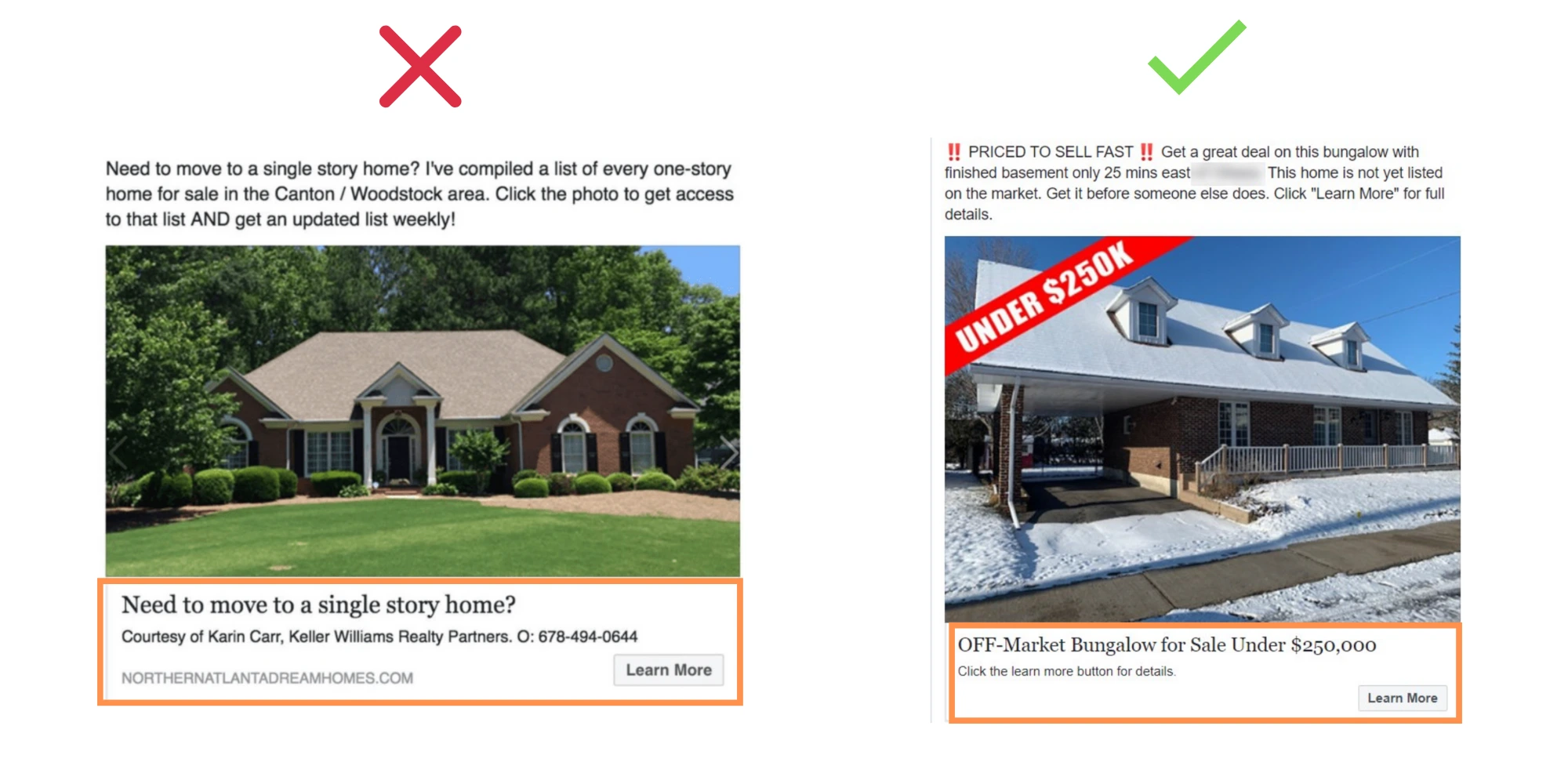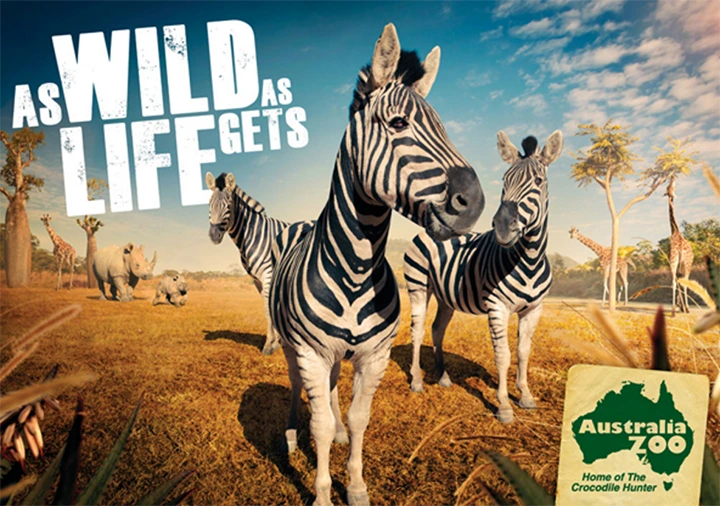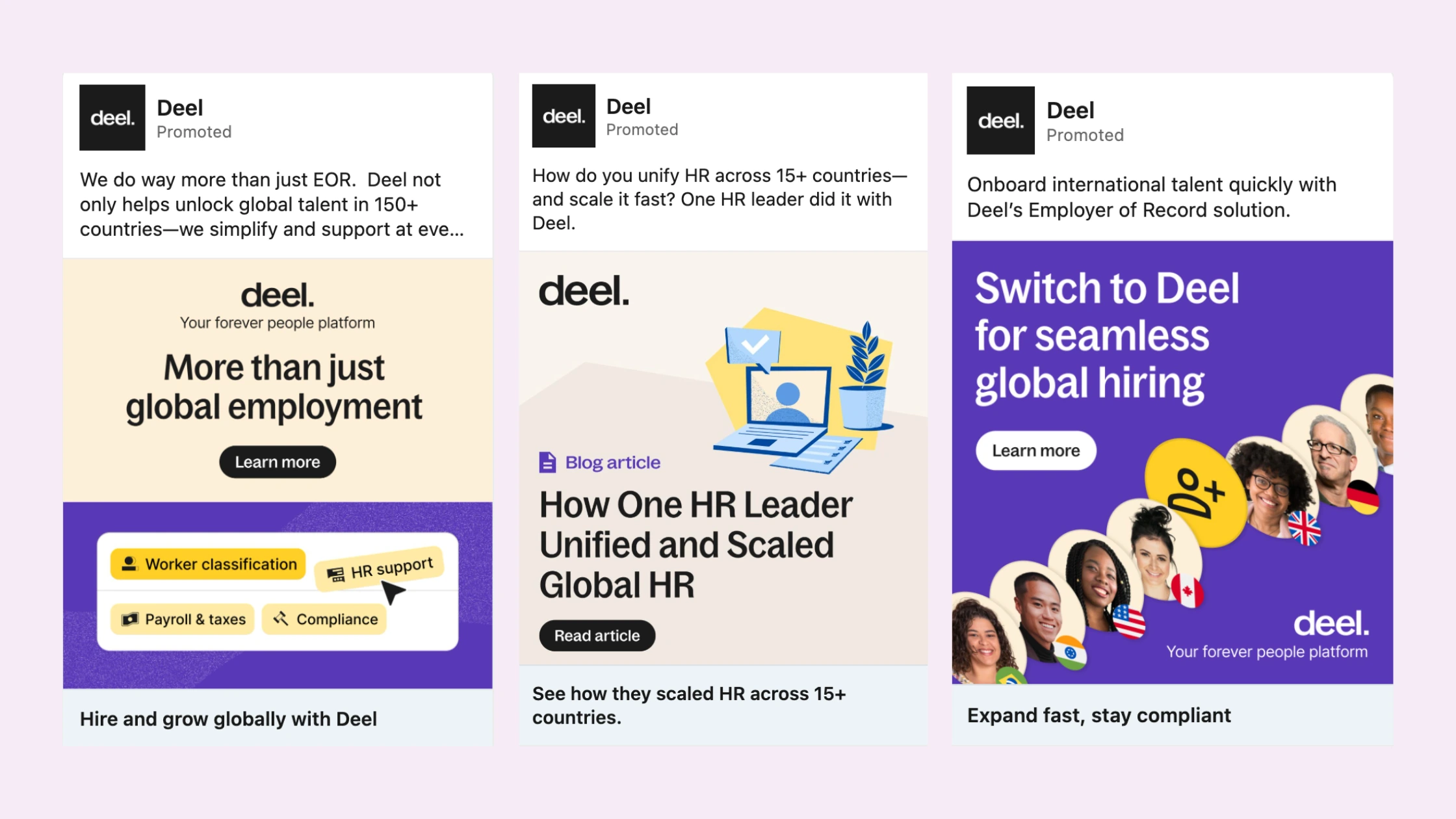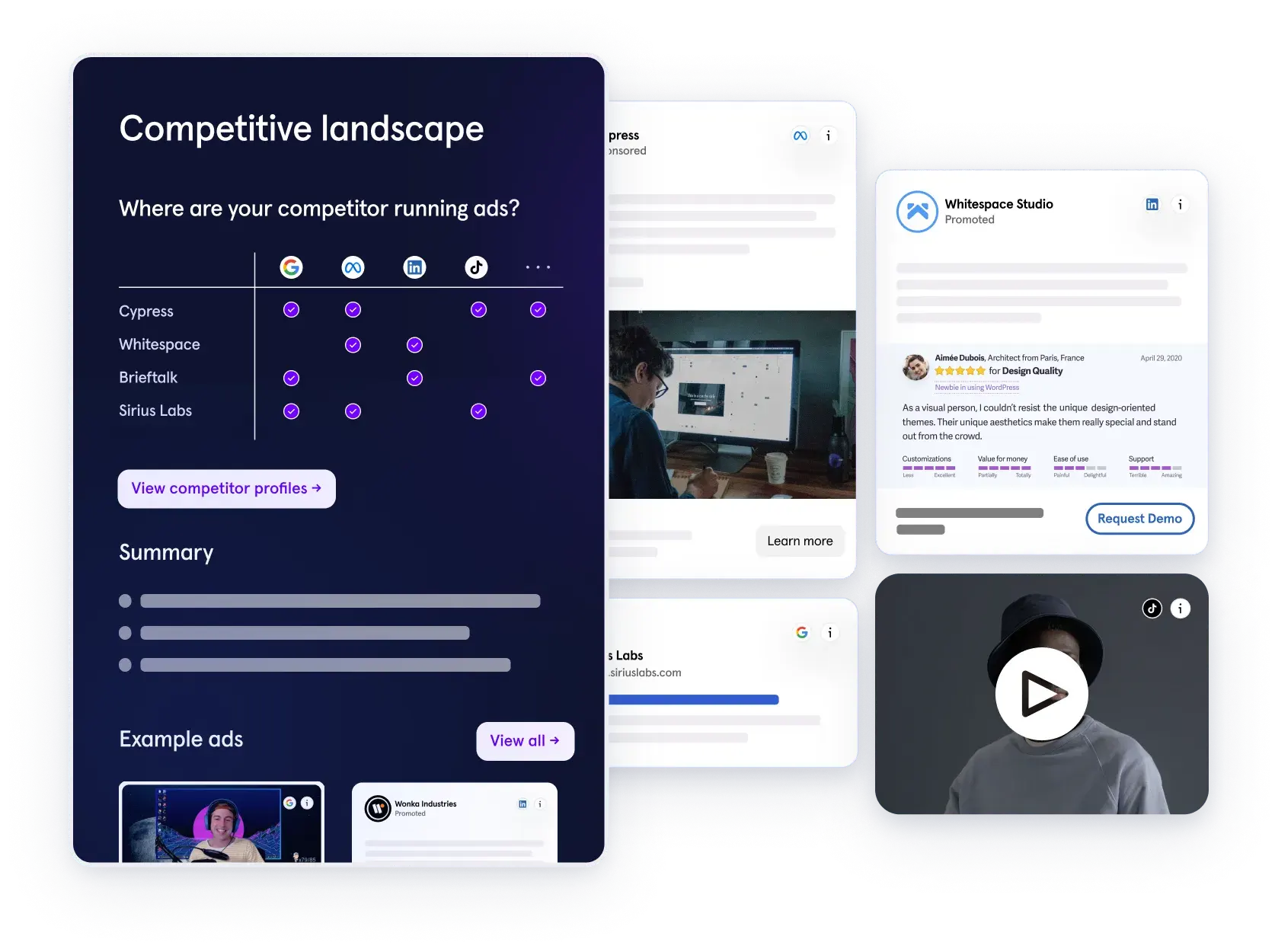If you’ve ever opened LinkedIn, scrolled past a Mercury card-black-on-black masterpiece, then glanced back at your own campaign dashboard with a sigh, you’ve felt creative envy.
It’s that low-grade hum telling you “our ads should look sharper, land harder, convert faster.”
Meanwhile every competitor in your niche seems to be shipping thumb-stopping videos before you’ve even finalized a static.
For early-stage founders and lean growth teams, that stings twice. Because, first, your CAC (Customer Acquisition Cost) math is ruthless. Every wasted impression burns runaway. Second, polished brand stories have become table stakes; prospects subconsciously benchmark you against category leaders with entire in-house studios. If your competitor is Notion or Ramp and when your ad shows up beside them, the contrast is brutal.
But here’s the twist nobody talks about: those “perfect” startup ads aren’t the product of one unicorn designer. They’re the output of a repeatable process that blends focus, systematic testing, and a handful of transferable principles. Crack the system and you can punch way above your head without a massive budget and without turning your calendar into a design sprint marathon.
This blog is all about helping you do that. We will cover how to:
- Strip ad creative down to first principles.
- Deconstruct the patterns shared by the fastest-growing YC (and YC-ish) brands’ ads so your team can adapt (not steal) with pride.
- Show how AI, UGC, and native formats have shifted the playing field.
- Hand you a testing framework that won’t drown your PMM in variants.
Ready? Let’s demystify ad creative one section at a time.
What is ad creative?
Ad creative is the complete, platform-ready asset that captures attention and directs it toward a measurable action. Imagine a single TikTok ad from a fast-moving Saas startup:
- a looping two-second product demo (motion)
- a headline promising a clear benefit (copy)
- a neon “Get early access” sticker (CTA)
- music timed to the punch line (audio)
- a mobile-first aspect ratio the algorithm favors (format)
Those components together form the creative. Its job is to grab a user who’s speed-scrolling through 100 pieces of content per minute, hold them for three to five seconds, and funnel their curiosity into a click, a trial, or a purchase. If any layer fails i.e., the motion is boring, the headline is vague, the CTA blends into the background, the entire asset underperforms regardless of how brilliant the other layers might be.
Great creative, therefore, is less about aesthetic perfection and more about performance under constraint. These constraints are:
- Attention window: Most consumers decide in under half a second whether to keep watching.
- Format physics: Every channel (Reels, LinkedIn feed, pre-roll) rewards specific dimensions, durations, and interaction cues.
- Offer clarity: A single, unmistakable promise that aligns with intent.
- Brand consistency: The ad must feel native to the platform yet instantly recognizable as your brand, not a stock template.
When you evaluate creative, look at these levers in sequence: hook → message → proof → call-to-action (CTA). If the hook fails, nothing else matters; if the ask is CTA, the best hook in the world leaks conversions.
How ad creative differs from ad copy
Ad copy is the verbal payload inside the creative. It’s the headline, supporting sentence, and CTA verb — the words that shape meaning and persuade. Creative is the container that delivers those words with maximum punch.
Here’s a quick A/B thought experiment to make it even clearer:

Example of a good ad creative and a bad ad creative
| Element | Ad A (❌) | Ad B (✅) |
|---|---|---|
| Visual | Generic stock photo of a house | Bright image with snow + bold red “UNDER $250K” price banner |
| Headline | “Need to move to a single story home?” | “🚨 PRICED TO SELL FAST 🚨” with urgency and direct benefit |
| Body Copy | Long paragraph with excessive detail and no scannable structure | Short, punchy explanation that builds curiosity and urgency |
| Value Prop | Implied (list of homes, no clear hook) | Clear (“Off-market home under $250K, not yet listed”) |
| CTA | Weak “Learn More” button, low visual emphasis | “Learn More” backed by emotional momentum and strong framing |
| Overall Feel | Passive, generic, forgettable | Attention-grabbing, urgent, value-packed |
Variant A is more likely to underperform because the creative is a generic, uninspired stock image and fails to capture attention. This means that the copy never even gets a chance to work. Variant B improves performance immediately by fixing the creative, while Variant C changes only the copy and generates even stronger results using the same visual foundation.
For founders and growth leads, clearly separating creative and copy unlocks strategic advantages:
- Diagnose issues more accurately: When performance drops, determine whether the problem lies in the visual impact (creative) or the message clarity (copy).
- Test with focus: Isolate one variable per test. You can either update the copy while keeping visuals consistent or vice versa. Testing too many elements at once makes results impossible to interpret.
- Scale with structure: Once a particular copy approach performs well, apply it across various creative formats like static graphics, UGC, or vertical video. Similarly, if a specific visual concept succeeds, refresh the messaging to extend its lifespan.
Think of copy and creative as separate but complementary levers. When treated independently, they allow for faster iteration, more meaningful insights, and ultimately, stronger results.
Why ad creative matters more than ever
The modern feed is a cognitive war zone. A typical user now skims almost 100 commercial messages every day. This ranges from push notifications to sponsored posts, pre-roll, subway screens, inbox promos, etc. This number is big enough to cause banner blindness on the consumer’s end: the brain’s defensive habit of filtering anything that even smells like an ad.
Mobile increases the problem even more. Feeds are now vertical video highways where the first half-second determines life or death. If your hook frame doesn’t spike curiosity, the algorithm reads the swipe-away as negative feedback, buries your impression share, and quietly taxes your CAC.
This is where creative fatigue sneaks in. Even the smartest founding teams assume they’re fine once an ad finally clears the performance bar. But two weeks later, click-through drops 30 percent, not because the offer lost relevance but because the audience has simply seen it. High-intent viewers convert on the first or second exposure; the rest join the “I’ve already watched this” cohort and reflex-skip.
The solution isn’t more budget or louder design; it’s precision and balance. Here are some strategies to make it possible:
- Build scroll-stopping hooks tuned to the feed’s native context such as vertical framing, bold motion, single focal point.
- Present the benefit within the first few seconds.
- Rotate creatives on a cadence measured by frequency and performance decay.
- Treat mobile-first layout rules as law: 4:5 or 9:16 aspect ratios, readable captions for sound-off viewing, CTAs that pass the thumb-tap test.
In today’s ad environment, attention is limited, most content is consumed on mobile, and platforms reward content that aligns with their preferred formats. When you design creative that works with these conditions but not against them, you stop hoping people will notice your ad, and start giving them a real reason to engage.
What top-performing startup ads have in common and so should you
You know a great startup ad when you see one. It doesn’t shout. It doesn’t oversell. It just clicks. The promise feels sharp. The visual feels premium. You pause, even if just for a moment. Then you do something rare: you tap.
Those ads follow a repeatable pattern and discipline that ensures that they perform. Here’s the anatomy of those ads, broken down into six core traits that will help your ad creatives perform better.
1. Use visual hierarchy that grabs attention in under 3 seconds
Top ads are designed to win the first glance. They use motion, contrast, or human faces to anchor the eye. Whether it’s Ramp’s animated dashboard revealing savings or a UGC video where a user holds the product up close, there’s always a clear visual hierarchy: first comes hook, then the message, and then the action. It avoids clutter and distraction at all cost.

This ad by Australia Zoo is a good example of visual hierarchy
2. Focus on one clear benefit or Unique Selling Point (USP)
High-performing creatives don’t try to explain everything a product does. They isolate a single benefit, deliver one promise, and let the landing page handle the rest. Deel’s ads are a great example:
- “Switch to Deel for seamless global hiring”
- “More than just global employment”
- “How One HR Leader Unified and Scaled Global HR”
Each message zeroes in on a core anxiety: hiring complexity, HR sprawl, or slow expansion. That clarity is what makes them sticky.

Deel's ads are great examples of clear USP
3. Use CTA that’s clear, frictionless, and context-matched
A weak call to action (CTA) uses generic phrases without adding clear context or incentive. On its own, it doesn’t tell the user what they’ll get or why they should click unless the ad creative or copy around it provides that clarity. On the other hand, strong CTAs are specific and action-oriented, like “Try the demo,” “Get early access,” or “See pricing.” They align with where the user is in the buying journey and remove uncertainty about the next step. High-performing ads also make the CTA visually prominent using strong contrast, placing it where the eye naturally lands (typically toward the bottom), and designing it in a way that clearly signals it's the next step to take.
4. Make your creative match the platform
Good ads are designed for the platform they’re on. On TikTok, that might mean a selfie-style video with captions and emojis. On LinkedIn, it could be a clean carousel showing product stats or UI (user interface) highlights. The format shapes how people pay attention, so your ad needs to feel like it belongs. High-performing teams rebuild creative for each channel instead of forcing one asset to fit all.
5. Show proof inside the ad
The strongest ads include credibility cues within the creative itself. That could be a customer testimonial popping up mid-video, a line like “Used by 3,000+ startups” placed front and center, or a subtle G2 tab in the background. These signals make people trust you faster.
6. Stay on brand, but don’t get stuck
Your ads should look and feel like they’re from your company, even if the tone or visuals shift from one campaign to the next. Maybe your color palette adjusts or your copy gets more playful, but things like your font, logo, or visual style should stay consistent. This builds recognition over time even if the viewer doesn’t consciously notice it.
The best-performing teams don’t obsess over making each ad perfect. They focus on being clear. One message, in one format, delivered well. Because the goal is to convert. And clarity is what converts.
Are AI-generated creative worth it or just hype?
AI-generated creative can seem like a game-changer. It promises faster production, lower costs, and the ability to generate countless variations quickly. For lean teams and busy founders, it feels like a shortcut: write a prompt, get multiple ad options instantly.
But in practice, most AI-generated creative still struggles to stand out. They require lots of manual fine-tuning (prompt edits) to reach expectations.
Let’s look at where AI helps and where it doesn’t.
Where AI performs well
1. Expanding variations
Once you’ve found a concept that works, AI tools like Sora, AdCreative.ai or Pencil AI can quickly generate different sizes (1:1, 4:5, 9:16), CTA versions, or layout tweaks. This is useful for quick implementation where quality isn’t much of a factor.
2. Visual ideation
Tools like Midjourney or Ideogram can help generate initial visual concepts, especially for intangible value props like “productivity” or “efficiency” that are hard to illustrate.
3. Drafting copy hooks
AI models like ChatGPT are effective at creating first-draft ad hooks, specifically in templated formats like “We help X do Y faster than Z.”
4. Producing at scale
For teams managing multiple campaigns or running creative refreshes regularly, AI helps reduce the manual workload and speeds up delivery timelines.
Where AI falls short
1. Generic visuals
AI-generated designs often lack originality. The layouts, icons, and color schemes can feel templated or outdated, which weakens brand perception and performance.
2. No understanding of your audience
AI doesn’t understand your specific customer’s context, pain points, or language. It tends to play it safe, which leads to creative that fails to stand out or connect emotionally.
3. No strategic awareness
AI can generate many assets, but it doesn’t know which ones are suited for top-of-funnel awareness versus bottom-of-funnel conversion. Strategic decisions still require human input.
4. Lack of differentiation
If multiple companies in your space use the same AI tools, outputs can start to look similar, thus making it harder to break through in a crowded market.
5. Requires multiple correction
It’s simply a bad practice to use the first generation of an AI. But then again, to make it further perfect, you need to spend a considerable amount of time giving commands and prompts.
So, is AI-generated creative worth using?
Yes, if used correctly. AI can increase efficiency, but it won’t replace judgment, insight, or brand understanding. Here’s how to use it well:
- Use it for brainstorming: AI is best for brainstorming, not for the final output. Especially if your brand leverages high quality output that matches audience expectation and have the bandwidth to make it happen, it might be better if you just use AI to share ideas with your designer.
- Combine AI with human editing: Treat AI outputs as rough drafts. Add real UI elements, rewrite headlines with customer language, and adjust layout for brand consistency.
- Apply it in low-risk areas: AI is ideal for tasks like testing variants, creating retargeting assets, or producing regional variations but not flagship campaigns.
- Keep human quality control: Final creative decisions should be made by someone who understands your standards, your market, and your buyer.
In short, AI can help your team move faster but not necessarily smarter. It's a valuable tool when used with intention, but it won’t replace the insight, nuance, and creativity needed to build ads that truly perform. That responsibility still belongs to you.
How to test and improve your ad creative (without overhauling everything)
Most teams treat creative testing like spring cleaning — something you do in one giant, exhausting sprint when performance tanks. But great teams treat it like a monthly routine, with a clear testing loop, focused inputs, and just enough structure to avoid creative chaos.
The goal here isn’t to launch 20 variants and pray. The goal is to build a creative system that surfaces what works, kills what doesn’t, and tells you why so you can iterate fast, not guess slow.
Here’s how to approach it like a performance team that knows what they’re doing.
Start with one variable at a time
Multivariate testing sounds great in theory until you realize you can’t isolate the winning element. Was it the benefit-led headline? The new UGC format? Or the brighter CTA button?
Instead, constrain every test to one change:
- Same video, different headline
- Same static, different CTA language
- Same copy, different layout or framing
This kind of approach forces discipline and makes your winners actually repeatable.
Use performance metrics that match your advertising goal
Every ad has a job to do. Top-of-funnel assets are meant to stop the scroll and raise awareness. Mid-funnel assets are designed to educate or qualify. Bottom-of-funnel ads must convert or nudge.
So optimize for the right metric:
- Thumb-stopping power: 3-second video views, hold rate
- Message clarity: Click-through rate (CTR), cost per view
- Conversion efficiency: CPA, ROAS, on-site conversion rate
If you’re testing video hooks but measuring purchases, you’re setting yourself up for false negatives.
Build a creative testing backlog
Great teams don’t brainstorm from scratch every week. They build a playbook and test ideas based on criteria that they have defined before. Some of these criteria can be:
- Voice of customer insights (support tickets, sales calls, G2 reviews)
- Competitor teardowns (what’s running in Meta Library, TikTok Creative Center, etc.)
- Channel-specific learnings (what worked last time on LinkedIn vs Instagram)
- Performance decay (top creative’s CTR dropped 25%? Time to refresh the hook)
Then each week, you ship new tests, and in the following weeks, you analyze their performance.
Align creative formats with funnel stages
Not every ad format works equally well across all platforms or stages of the buyer journey. A carousel that performs well on LinkedIn likely won’t resonate on TikTok. Similarly, a polished founder video might underperform compared to a casual UGC-style clip on Instagram.
Choose your creative format based on what the viewer needs to see at each stage:
| Funnel Stage | Best-Suited Formats | Example Creative |
|---|---|---|
| Top of funnel | UGC videos, meme-style posts, teaser visuals | Before/after comparisons, POV TikToks |
| Mid funnel | Carousels, product walkthroughs, testimonials | “How we saved 3 hours/week” case study |
| Bottom of funnel | Direct offers, urgency-driven CTAs, lead forms | “Try the free trial” with product UI demo |
Always let the goal of the ad dictate the format, not the other way around.
Use tools that streamline the creative process
Many early-stage teams don’t struggle with ideas; they struggle with turning those ideas into assets. The solution is to simplify execution using lightweight, reliable tools:
- Run quick A/B tests using Meta’s built-in test features
- Explore trends and high-performing hooks in TikTok Creative Center
- Save and organize past top-performing ads in Foreplay.io or Notion
- Write fast, simple creative briefs: audience, message, format without overthinking
Focus on creating a repeatable system, not debating every new concept from scratch.
Don’t wait for performance to drop before testing
If you only test new creative after your best ad stops working, you’re too late. Top teams test while things are still performing. So they can keep momentum, refresh before fatigue, and avoid sudden drops.
Creative fatigue is normal. What’s optional is whether it surprises you.
As a founder or growth lead, your role isn’t to make every ad yourself. It is to build a system that produces better creative consistently. That’s what transforms creative from a marketing challenge into a growth advantage.
Tools to help with ad creative teardown
You don’t need to guess what makes an ad work or reinvent creative direction from scratch every time you debunk ad creatives. With the right tools, you can dissect your competitors’ ads, extract patterns, and build a playbook of what resonates in your category. Here are six tools that help you do just that, split by free and paid options.
Free tools
1. Meta Ad Library
Meta’s ad library lets you explore all active ads running on Facebook and Instagram. You can search by brand name, keyword, or category, then filter by platform and format. While performance data isn’t available, it’s ideal for spotting creative patterns like messaging tone, use of video vs static, or how often a competitor rotates assets.
2. TikTok Creative Center
TikTok’s Creative Center gives you access to top-performing ads by region, industry, and objective. You can filter by CTR, watch time, likes, and more, making it one of the few free tools that actually shows performance data. Especially useful if your startup targets younger, mobile-first audiences or leans into vertical video.
3. LinkedIn Ad Library
LinkedIn’s official Ad Library lets you search and view all active sponsored content running on the platform. You can filter by company name, industry, or geography, making it easier to study B2B ad creative at scale. While it doesn’t provide performance metrics like CTR or spend, it’s highly useful for analyzing formats (carousel, video, single image), messaging angles, offer types, and how competitors position their brand across audience segments. You can also reverse-engineer ad rotation cadence by checking how frequently new creatives appear per brand.

Competitor Ad Intelligence Tool (COIN) by Kaya
Paid tools
4. Competitor Ad Intelligence Tool (COIN) by Kaya
If you want to skip the manual screening process that you need to do using the free ad plaforms, you can give COIN by Kaya a try.
Built specifically for startup marketers, COIN is Kaya’s internal competitor intelligence tool that shows you exactly where your competitors are running ads, what creative formats they’re using, how often they’re testing, and which messages they’re betting on across Meta, Google, LinkedIn, and more.
It replaces assumptions with evidence. Instead of wondering what to test next, you get instant insight into what’s actually driving results in your category — from YC-backed upstarts to scaled Series B players.
Here’s what COIN enables you to do:
- See where competitors are running ads across Meta, Google, LinkedIn, and more
- Track which formats, CTAs, and landing pages are being reused
- Study ad copy, positioning, and targeting strategies and derive insights from them
- Understand how fast top brands are rotating creative and what they’re iterating toward
Most ad creative spy tools are built for agencies or enterprises with six-figure budgets. COIN is built for lean teams who want fast, actionable insight instead of a wall of dashboards. It gives you just enough signal to steal what works, skip what doesn’t, and scale smarter.
5. Foreplay
Foreplay is a creative research tool built specifically for Meta ads. You can save, tag, and categorize ad creatives from your competitors, or build swipe folders to share with your team. It’s incredibly helpful for creative briefings, giving performance marketers and designers a shared visual vocabulary without drowning in screenshots and Slack threads.
6. Adbeat
Adbeat offers a broad-spectrum view of digital ads across display, native, and video platforms. It’s more focused on media buying and publisher-level insights, but still useful for creative teardown when you're looking at ad placements, formats, and longevity. If you’re running performance marketing at scale, Adbeat helps you see where money flows and why certain creative formats dominate.
Whether you’re just getting started or looking to deepen your teardown workflow, these tools help you move from “that ad looks good” to “we know exactly why that ad is working and how to beat it.
Why your competitor’s creative looks better and how to catch up
It’s not your imagination, your competitor’s ads probably do look more polished. And it’s completely normal if you’re left wondering: What do they know that we don’t?
Let’s unpack the real reasons behind the “how are they doing this?” feeling and what you can do to close the gap fast.
They build a playbook around the creative
Most teams write some copy, design the ad, and move on. But high-performing teams treat creative like product development. They test, tweak, and version it over time. Every ad is an experiment. If it works, they build on it. If it fails, they learn from it.
They focus on emotion, not features
Top ads make you feel something, such as urgency, relief, FOMO but not just list what the product does.
- “Still manually onboarding?” This indicates frustration
- “Saved $184K in 2 months” This indicates greed
- “No more Zoom-link chaos” This indicates relief
Your competitor’s ads resonate because they tap into real emotions. You can’t get there by only listing features.
They design for each platform, not copy-paste
High-performing teams don’t recycle the same ad across Facebook, LinkedIn, and TikTok. They rebuild creative for each platform’s format and user behavior. That’s why their ads feel right where they appear.
If your competitor’s ad looks cleaner or more native, it’s because it was made with that channel in mind but not stretched or repurposed from another format.
They refresh before performance drops
Even the best ad won’t last forever. Great teams know this and plan for it.
But they don’t wait to do a creative refresh until CTR drops. They refresh based on frequency and engagement trends. It’s all about having a repeatable process for keeping things fresh.
They track what works and build on it
Instead of starting from scratch each time, smart teams keep a record of what’s working:
- Which CTA drives the best results
- Which testimonial format performs at the bottom of the funnel
- Which video style gets the most engagement
TL;DR
- Separate copy from creative so you can test and improve each independently
- Optimize the first 3 seconds of every asset to earn attention before anything else
- Stick to one message per ad to avoid dilution and confusion
- Match creative format to platform instead of repurposing across channels
- Use clear, benefit-driven CTAs that look tappable on mobile
- Lead with emotion over features to create ads people actually feel
- Test one variable at a time to identify what’s driving performance
- Use metrics that align with funnel stage: views for hooks, CTR for copy, ROAS for conversion
- Build a backlog of creative ideas so testing becomes a habit, not a scramble
- Rotate creatives proactively based on fatigue signals like frequency or drop in CTR
- Use AI tools to scale production, not strategy or taste
- Document what works and reuse winning structures across new variants
- Use customer quotes, testimonials, and product UI to bring proof into the creative
- Treat creative testing like product iteration: tight loops, fast feedback, small wins
- If your competitor’s creative feels better, assume they’ve tested 10x more and start catching up systematically
FAQ
What is the meaning of creative advertising?
What is ad copy and ad creative?
What is the role of an ad creative?
Final thoughts
Great ad creative isn’t magic, it’s the result of clear thinking and consistent testing. When you separate copy from visuals, design with each platform in mind, focus on one strong message, and test regularly, your ads get better fast.
To speed things up even more, use a competitor creative intelligence tool that shows you what top startups are actually running — what formats they use, how often they update creatives, and which messages they repeat.
When you combine your own teardown process with real competitor data, you stop guessing and start making smarter, faster decisions.
That’s how you turn creative envy into a real advantage.


